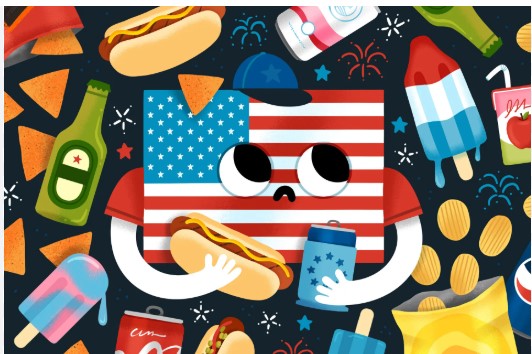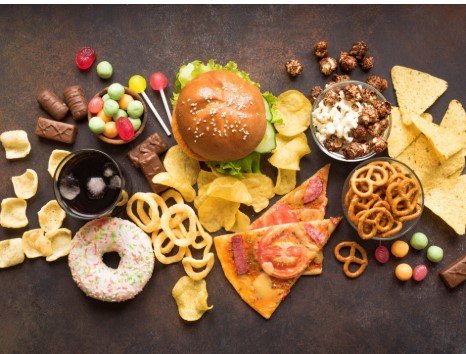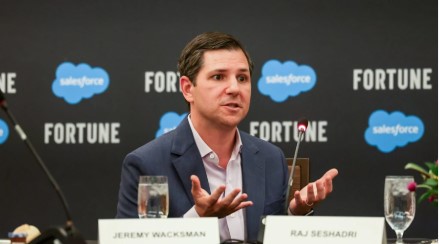
Devouring a hot dog beneath a sky ablaze with fireworks on the Fourth of July isn’t merely nostalgic — it borders on ritualistic patriotism.
From saccharine tricolor popsicles brimming with Red Dye 40 to nitrate-saturated franks and a continual cascade of sugary cocktails, this fervently American jubilee doubles as a bacchanal of gastronomic disarray.
However, amidst the confetti and flag-flecked attire, a collective reckoning is unfolding. Increasingly, Americans are scrutinizing the very fabric of their daily consumption.
The nation’s pantry is steeped in synthetic stabilizers, hyper-processed matter, and chromatic dyes — all woven into a tapestry of rising obesity and metabolic afflictions
. According to Ipsos, a respected global pollster, nearly half the populace now views these food embellishments as menacing to personal well-being — eclipsing anxieties over pandemics or climate cataclysms.
From microplastic-laced morsels to carcinogenic preservatives, culinary paranoia is thriving. And in this atmosphere of dietary unease, US Health Secretary Robert F.
Kennedy Jr. has enshrined food reform as a political cornerstone. His crusade strikes a chord with the public mood: approximately two-thirds of Americans suspect synthetic dyes and agrochemicals render food perilous — and intriguingly, this sentiment transcends political demarcations.
Even with an entrenched industrial food machine, a surge of conscientious eaters is emerging. A full 64 percent now scan nutrition labels more vigilantly than they did half a decade ago, per NSF International, a public health watchdog. And yet, disillusionment persists — merely 16 percent of Americans deem food labeling claims trustworthy.
In a paradox that borders on dark comedy, Americans are now casting longing glances across the Atlantic, where food labeling is more stringent and transparency is more sacrosanct.
A mere 37 percent assert that U.S. labeling outperforms international counterparts. There’s a hunger — no pun intended — for regulatory reform and ingredient candor.
American cuisine, both in content and casing, veers starkly from European counterparts. Though dyes and preservatives are easy scapegoats, the true villain might be the cavalcade of cholesterol, the syrupy torrents of sweetened beverages, and those omnipresent industrial chips — not to mention our national proclivity for gargantuan portions.
Compared to other affluent nations, Americans ingest almost twice the sugar, substantially more processed goods, and a surfeit of artery-clogging fats. Gluttony, not just synthetic tweaks, underpins the crisis.
The consequences are vivid: U.S. health metrics trail behind Europe’s, with life expectancy lagging despite astronomical medical expenditures. Alarmingly, wealthy Americans exhibit worse health outcomes than their economically modest European peers.
If a renaissance of American vitality is to dawn, it must begin not with legislation alone but at the picnic table itself. Independence may have freed our colonies from the Crown, but reclaiming our well-being demands a rebellion against what we habitually consume.
The Transatlantic Divide in Edibility
Pediatricians, researchers, and nutritionists largely concur — ultra-processed edibles wreak havoc on children’s health. Yet these synthetically enhanced goods occupy an ever-growing share of the supermarket aisle. In 2023, data revealed that 60 percent of purchased American foodstuffs contain chemical additives — up 10 percent since the turn of the century.
In response, Kennedy’s Department of Health and Human Services unveiled its “Make America Healthy Again” blueprint, spotlighting global exemplars like France and Scandinavia, where policy discourages the habitual consumption of engineered edibles. The report catalogues various additives common in American fare but either outlawed or stringently curtailed across Europe — a disparity Kennedy suggests must be rectified.
Take Red Dye 40 — a notorious pigment found in vividly colored cereals and confections, correlated with hyperactivity in children and, in some rodent studies, implicated in tumor proliferation. While the EU mandates stark cautionary labeling (and some nations outright ban its use), American oversight merely requires it to be listed among other ingredients.
The rogues’ gallery continues:
- Titanium Dioxide: A whitening agent found in Skittles and creamers, barred in the EU due to genotoxic concerns, yet still permitted stateside.
- Propyl Paraben: A preservative common in mass-market pastries; prohibited in the EU over endocrine disruption fears, but still circulating in U.S. baked goods.
- Butylated Hydroxytoluene (BHT): An antioxidant additive in cereals and chips, suspected of carcinogenic properties and harmful to renal and hepatic function, yet broadly approved in America.

Artificial sweeteners — including aspartame, saccharin, and sucralose — appear on both continents, though the EU enforces stricter limitations.
Kennedy’s campaign has yielded some voluntary concessions: food giants have agreed to excise various synthetic dyes (yes, including Red Dye 40) by 2026. Should they renege, regulatory threats loom.
Yet Additives Are Only the Tip of the Fork
To pinpoint synthetic additives as the prime culprit in America’s dietary downfall would be an oversimplification. The real enemy often wears a natural face — saturated fats, heaping spoonfuls of sugar, and caloric excess.
A chilling historical comparison: the U.S. prohibited trans fats in 2018 — an ingredient known to ravage cardiovascular health — a full 15 years after Denmark. This delay speaks volumes. For over a decade, Americans unknowingly consumed substances that their European counterparts had already jettisoned.
This regulatory sluggishness partially accounts for why U.S. rates of obesity and diabetes dwarf those of European nations. It’s not just what’s in the food — it’s the very architecture of our food culture.
In 20th-century America, as mass consumerism flourished, convenience became the north star. Microwaveable dinners and shelf-stable snacks monopolized kitchen cabinets. That came at a cost: more preservatives, more synthetic agents, more disconnection from whole foods.
Furthermore, American culinary tradition lionized meat, cheese, and butter — animal-derived fare laden with saturated fat. The meat lobby, interwoven with patriotic narratives, propelled consumption to unprecedented heights. Meanwhile, Europeans gravitated toward olive oil, legumes, and plant-based staples — a Mediterranean paradigm that yields lower rates of heart disease.
Regulations Aren’t Enough — Behavioral Revolution is Key
Kennedy’s calls for reform are necessary but insufficient. Eliminating additives will not rescue a nation whose diet is bloated with naturally unhealthy ingredients. Empty calories lurk everywhere — in syrupy colas and greasy cuts of meat, whether enhanced or not.
The MAHA (Make America Healthy Again) initiative endorses whole foods — a commendable pivot. But Kennedy’s vision clashes with political realities: calls for accessible whole foods ring hollow as Congressional Republicans propose steep reductions in food assistance programs. Meanwhile, his concerns over pesticide saturation collide with an EPA inclined to deregulate.
Such contradictions reveal a larger truth — while government intervention is valuable, it won’t suffice. Personal agency and cultural shifts are indispensable. This is, after all, a country that enshrines autonomy.
One celebratory binge on the Fourth of July? Harmless. But what we place on our plates come July Fifth — that’s what sculpts our future.


